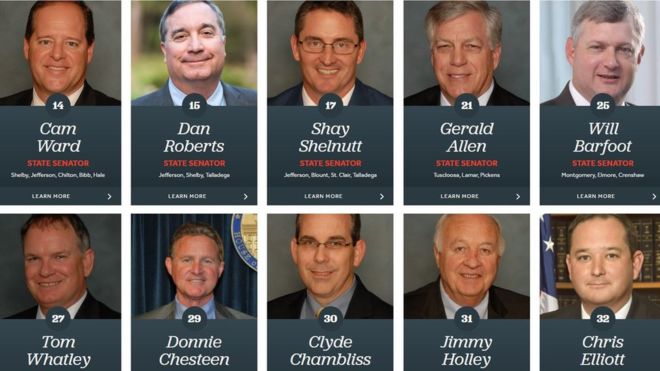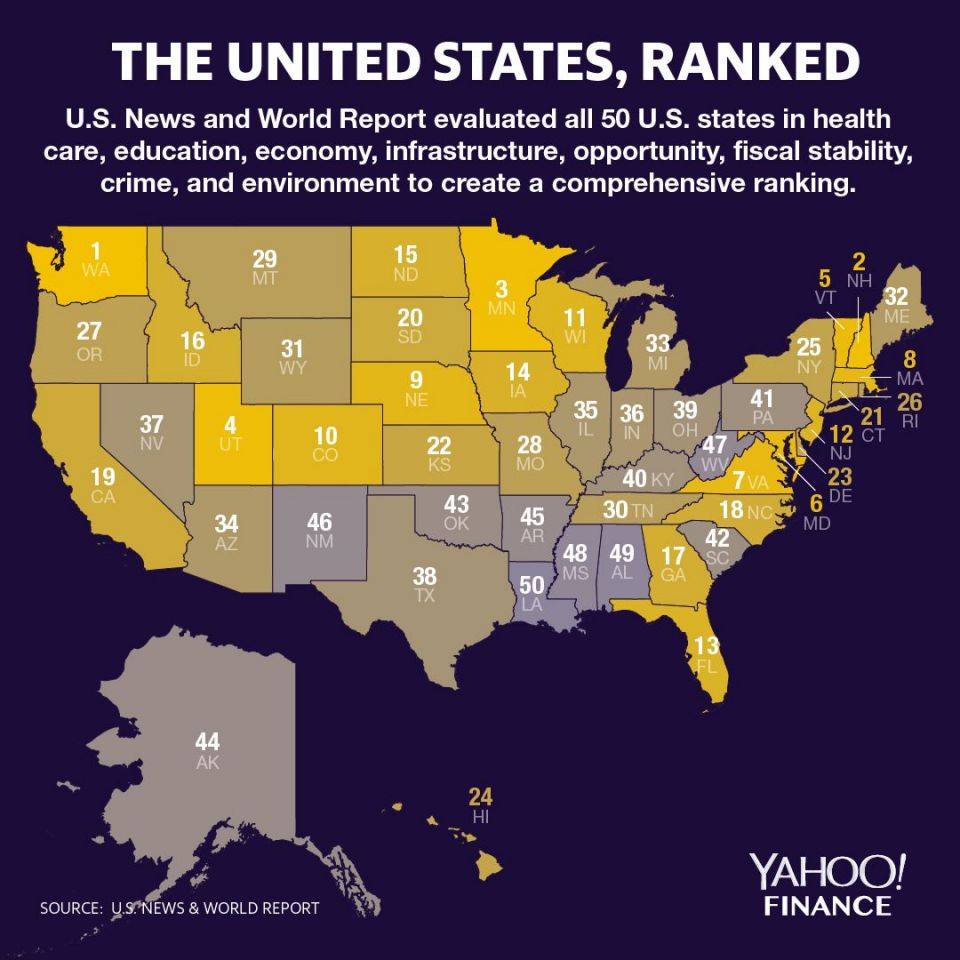What We Can Learn from a Ranking of the Nifty Fifty

That’s certainly the case in places like Pennsylvania, New York, Connecticut, North Carolina, Georgia and California. The majority of the people living in and around Philadelphia, New York City, the southwestern corner of Connecticut, Raleigh-Durham, Atlanta, and coastal California live in pleasant conditions, but each of these states has vast areas of “blight” with respect to things like education and employment.
Virginia and Minnesota are interesting. The vast majority of the people in the former state live within a commute of the nation’s capital, and their affluence greatly overwhelms those living in the “back woods.” In Minnesota, we have the huge concentration of people in and around the Twin Cities.
My hat’s off to Utah. The Mormon values of hard work, reverence, abstention and chastity make poverty an extremely rare occurrence. Yes, they have polygamy, another name for statutory rape and childhood slavery, but on balance, their values are good and the results prove that out.
Vicious Cycle
Some states, regrettably, have very little affluence to balance out the poverty. Making matters worse now is, the vast lack of education in the Deep South is being exploited to make things even more miserable for these people. Sure, you can get the largely white, male, Evangelical Christian state legislature in Alabama (pictured above — notice any common characteristics?) to put a ban on abortion, but what happens when the entirety of the entertainment industry refuses to do business in your state? What happens when tourism falls to near zero? Answer: the entire state takes yet another step backwards.
If there is a path out of poverty, racism, ignorance, and misogyny in this part of the country, it begins by chipping away on these old attitudes, not by taking unfair advantage of them, thus plunging these regions and their people deeper into the darkness.


Craig,
Well done, you’ve finally become aware that the US is a very widely diverse society !
Well, it’s a good start I suppose. Next you’ll become more tolerant as you get to know your fellow Americans a little better,…..hmmm, maybe that’s a bridge too far,… but you never know, given time, stranger things have happened.
Incidentally, Utah (and the Church of Jesus Christ of Later-day Saints) outlawed and made polygamy a criminal offense nearly 130 years ago ! (You really should catch up with the times).
Also, I’m a little startled by your accusation that polygamy equals ” statutory rape and childhood slavery ” ? That seems to be another of your overly salacious and inaccurate libels again t those of whom you disapprove.
Many cultures and nations have quite happily practiced plural marriages throughout history and into present era. In some cases those societies were strongly matriarchal.
I suspect there’s more than a bit of the Puritan about you. I can see you as one of those condescending missionaries settling in tropical climes, insisting the native women cover their bare bosoms for fear of stirring up lustful, evil thoughts! (none of which existed until you arrived).
It’s quite possible for a number of consenting adults to have a perfectly peaceable, beneficial polygamous social environment.
Polygamy is practiced by about 16% of the world’s population and oppression of this custom is often seen as an imperialist imposition, destroying ancient cultural customs by force and colonialist arrogance.
(Personally, I’m happily monogamous. Being nagged in stereo holds little appeal ! 🙂 )